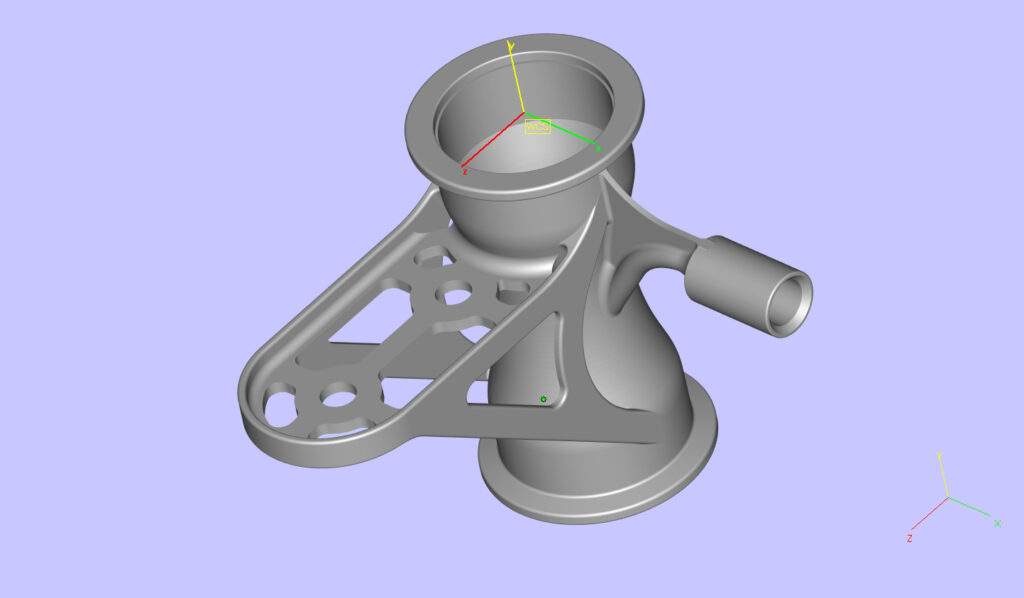A 3D CAD file, (3-dimensional Computer Aided Design File) is a requirement for RAM3D to print your part. 3D CAD is common in the engineering industry, however for individuals and smaller businesses, these systems can be expensive. There are alternatives available and these can be problematic when it comes to using the file you have created.

The types of files we use are…
- Solidworks (2019) and Fusion 360
- A generic solid model such as parasolid, iges or step files. These are 3D CAD formats that can be shared between many different CAD programs
- An STL file. This type of file contains a description of thousands of small triangles that define the shape of your part. These are used extensively for 3D printing and are the type of file our programming software uses further on in the programming process.
Good quality CAD systems create robust CAD files and good quality CAD systems will also output files in all the above types.
Some cheaper and online CAD programs only offer the file to be saved as an STL, (option 3).
While these may be OK for hobbyists with home FDM printers, often these CAD programs create an error-ridden file that is difficult or impossible to use to program your part on our high-end production machines.
If you provide a 3D CAD file of the types in 1 or 2 above, then we will make the STL file here.
We will make a good quality STL with no errors. Additionally, the benefits of sending us your solid models instead of an STL file are as follows;
- We can repair a solid model prior to creating an STL file.
- Addition of threads, cavities or other features at customer request. We help get the best result for you. Sometimes we suggest small changes to help the build. With a solid model, we can do those changes for you (an STL we generally can’t).
- Creation of the STL file with the optimal resolution: Too few triangles and the part will appear flat sided (faceted) and too many triangles and the file may become unmanageably large. There is a sweet spot beyond where you get no benefit in part quality for any increased STL resolution.
- Creation of a good STL file with few triangle errors – we examine every STL file we receive. We check that all the triangles in the STL meet the bordering ones with no holes or overlaps. This ensures robust data for the machine to use to make your part.
- We can add supporting structures if necessary. Although the bulk of the part support is added later in the process, we have on occasion needed to add removable struts or structure to help a part build and retain shape. This is best done on a solid model.
You can send us an STL file but be aware that there are limitations to their use.
